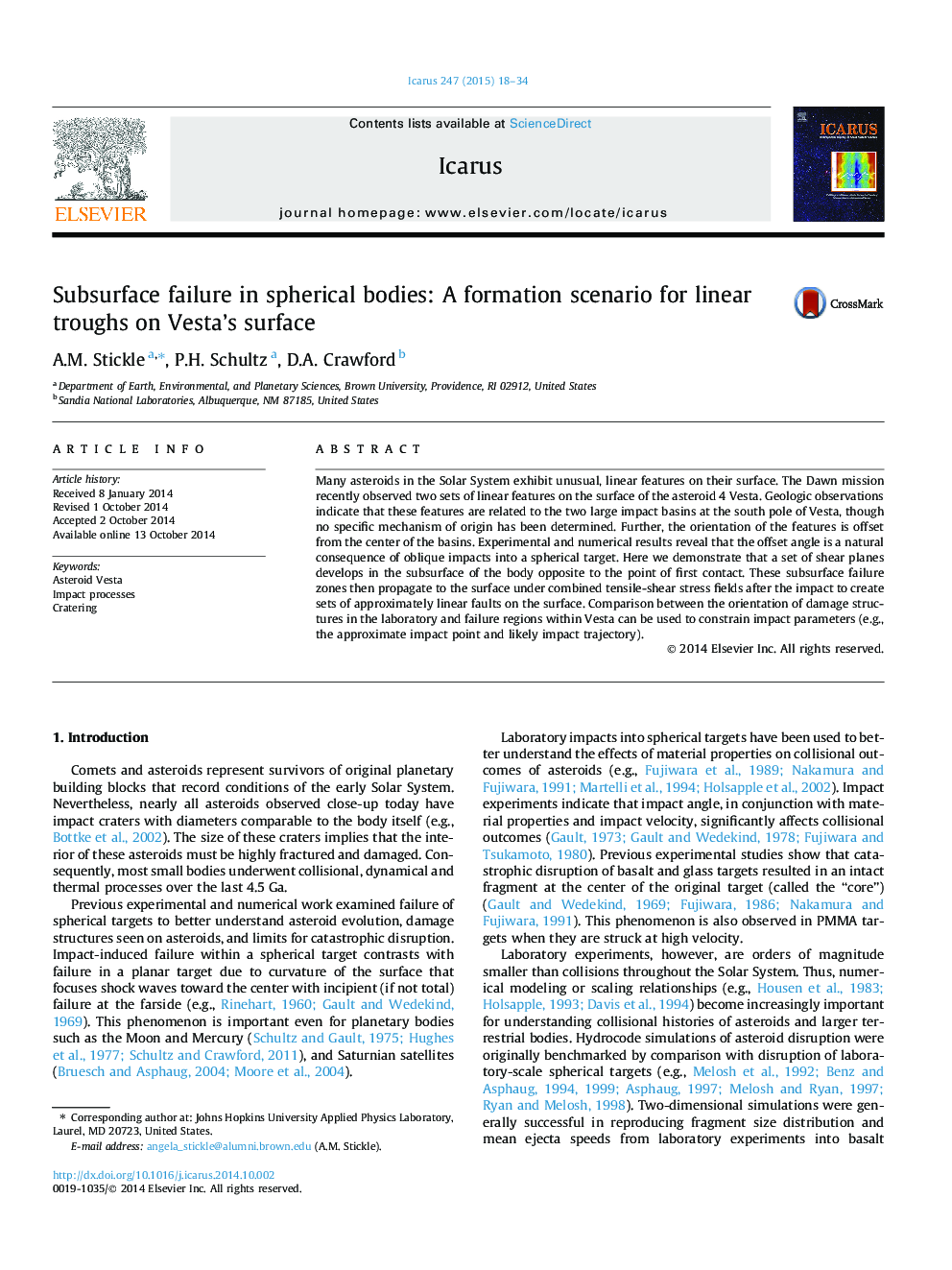| Article ID | Journal | Published Year | Pages | File Type |
|---|---|---|---|---|
| 8137021 | Icarus | 2015 | 17 Pages |
Abstract
Many asteroids in the Solar System exhibit unusual, linear features on their surface. The Dawn mission recently observed two sets of linear features on the surface of the asteroid 4 Vesta. Geologic observations indicate that these features are related to the two large impact basins at the south pole of Vesta, though no specific mechanism of origin has been determined. Further, the orientation of the features is offset from the center of the basins. Experimental and numerical results reveal that the offset angle is a natural consequence of oblique impacts into a spherical target. Here we demonstrate that a set of shear planes develops in the subsurface of the body opposite to the point of first contact. These subsurface failure zones then propagate to the surface under combined tensile-shear stress fields after the impact to create sets of approximately linear faults on the surface. Comparison between the orientation of damage structures in the laboratory and failure regions within Vesta can be used to constrain impact parameters (e.g., the approximate impact point and likely impact trajectory).
Related Topics
Physical Sciences and Engineering
Earth and Planetary Sciences
Space and Planetary Science
Authors
A.M. Stickle, P.H. Schultz, D.A. Crawford,
